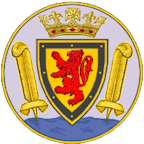History 1950 to 1975
In the immediate aftermath of the war development was arrested, but gradually Saltash began to recover and to rebuild. The bombed cinema was replaced in 1951 by the Regal, sadly demolished only thirteen years later. Saltash Wesley Church was built anew in the grounds of Well Park House, at the junction of Callington Road and Glebe Avenue, and the first sevices were held there on Easter Day 1953. A site along Longstone Road was chosen for the building of a new primary school, which opened in 1957.
In 1959 the construction of a road bridge between Saltash and Plymouth began and, in stark contrast to the building of the railway bridge, a large number of buildings in Saltash were lost, including fifty houses, ten shops and the Masonic Hall. The Tamar Bridge was and is a joint venture financed by Cornwall County Council and Plymouth City Council, without a grant from the Government, and is still a toll bridge. Its suspended length is 1,848 feet (564 metres) and the length of the main span is 1,100 feet (335 metres). As soon as the bridge was opened to traffic in October 1961 the ferry became redundant. The last Saltash ferry crossed the Tamar, and the town bade farewell to the ferry rights granted by Queen Elizabeth I almost four hundred years previously. Her Majesty Queen Elizabeth the Queen Mother officially opened the Tamar Bridge on the 26th of April 1962.
The opening of the road bridge swelled the population of Saltash, which developed enormously during the 1960s. Most the buildings on the northern side of Fore Street were replaced with new shops built further back to create a far wider road. Several new housing estates were built on open spaces within the town, on the fields between Saltash and St Stephens, and along the major roads into the town. The building which had been St Anne's Convent until 1959 was reopened in 1962 as St Anne's Old People's Home. Also in 1962 the post office moved to a new building on the former Wesley Church site. The library, which had moved from North Road School to Church House in 1954, reopened in the present purpose-built building in 1963. Saltash Grammar School moved in 1965 to a new site at Wearde, becoming fully comprehensive three years later. The Gospel Hall at Burraton was built in 1966. The Kimberley Stadium pavilion and stands were erected in 1968. The new STD telephone exchange in Glebe Avenue became operational in 1969. Saltash Police Station moved to the present building on Callington Road in 1971. The town gained another school in 1972, when Burraton Primary School was opened. Also in 1972 Saltash Wesley Youth Club, held for almost twenty years in the old Well Park House, was replaced by a youth centre for Saltash in conjunction with Cornwall County Youth Council. The new establishment was named the Kenwanne Centre, from a native american word meaning 'evening'.
The biggest changes, however, were taking place around the waterside. In 1957 the area had been declared a slum, and the decision was made to demolish most of the buildings, some of which dated from the 16th century. The redevelopment project lasted until 1966, during which time all but two of the old houses and shops, and all the old industrial buildings, including those associated with the fishing and boatbuilding industries, were demolished. Waterside became predominantly a residential and leisure area. The old gas works site was redeveloped as a sailing club. A public housing estate filled most of the remaining area, with the medieval Silver Street downgraded to an access road. The only historic buildings to survive were the town quay, Mary Newman’s Cottage with the adjoining cottage, and the three pubs (although the seaward end of the Passage House Inn, including the upper floor spanning Tamar Street, was lost). The former Mission Hall having been demolished in 1963, the Waterside Boys Club, renamed the Saltash Boys Club in 1957, re-opened in a new building on the same site in 1965.
In 1973 Mr Frank Elliott, disagreeing with decimalisation, closed his grocery shop. To this day the shop has remained intact, with the goods still on the shelves, and is open to the public as a museum.
Saltash lost its Borough status in 1974 as a result of the Local Government Act of 1972, and the town became part of the Caradon Council District (itself abolished as part of the 2009 structural changes to local government in England). However, in recognition of its former status Saltash retains the office of Mayor who, as chairman, presides over meetings of the Town Council.
page updated 2025-03-21
